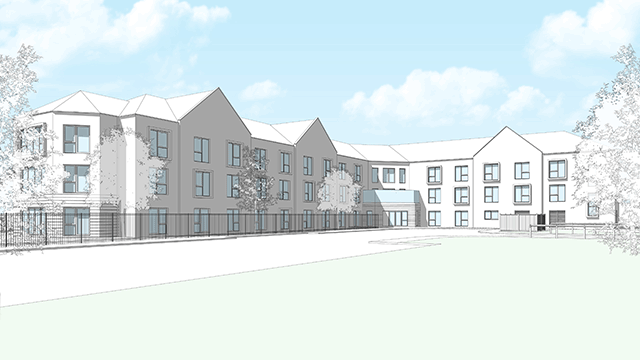Rating – Non-domestic rates – Hereditament – Respondent valuation officer entering premises of barristers’ chambers in non-domestic rating list as single hereditament – Appellant head of chambers proposing alteration to six separate hereditaments – Valuation tribunal deciding premises remain as single hereditament – Appellant appealing – Whether premises single hereditament occupied by all members or rooms occupied by individual barristers as separate hereditaments – Appeal dismissed
The appellant was head of a set of barristers’ chambers with premises at 15-17 Bedford Row, London WC1. At the material time, members of chambers also occupied an annex on two floors of a neighbouring building in Jockey’s Fields.
Following the introduction of the regime of small business rate relief by the Non-Domestic Rating (Reliefs, Thresholds and Amendment) (England) Order 2017, a ratepayer occupying only one hereditament, the rateable value of which was not more than £12,000, would receive a 100% reduction in their rates bill. That provided an incentive to split a larger hereditament into smaller units where possible.
With effect from 1 April 2017, the Jockey’s Fields premises were entered as a single hereditament in the local non-domestic rating list with a rateable value of £152,000. The appellant proposed that the list be altered to split the entry and show each of the rooms occupied by individual barristers as a separate hereditament. The respondent valuation officer opposed the proposed alteration and the Valuation Tribunal for England agreed that the premises should remain as one hereditament. The appellant appealed.
The sole issue was whether the seven barristers’ rooms in the Jockey’s Fields premises should be shown in the rating list as six separate hereditaments, on the ground that on 1 April 2017 (the material date) they were in the sole or paramount occupation of six individual barristers.
Held: The appeal was dismissed.
(1) The primary test for the identification of a hereditament was based on visual or cartographic unity and geographical (whether the premises constituted a single unit on a plan). Normally, a hereditament was a self-contained piece of property, all parts of which were physically accessible from all other parts, without having to go onto other property; and a self-contained piece of property was a single hereditament: Woolway v Mazars [2015] UKSC 53; [2015] EGLR 56 applied.
In the present case, the rooms occupied by individual members were capable of being separate hereditaments. Someone entering one of the rooms and closing the door would be in a self-contained space which could be depicted on a plan. The appeal turned on the identity of the person who, in law, was the occupier of those rooms. Viewed as a whole, the appeal premises were also self-contained (all parts being accessible without leaving the premises). If, for rating purposes, they were occupied by the same person, the appeal premises would also be capable of being a separate hereditament.
(2) There were four necessary ingredients in rateable occupation: (i) actual occupation; (ii) exclusive for the particular purposes of the possessor; (iii) of some value or benefit to the possessor; and (iv) not for too transient a period: see John Laing & Sons Ltd v Kingswood Assessment Committee [1949] 1 KB 344.
Occupation of a single hereditament by two or more individuals having joint rights would be treated as rateable occupation by them all, whereas if occupation was by more than one person having separate legal or equitable rights, it was necessary to determine which of them was the rateable occupier. Those situations were distinct from cases where different parts of a building were let separately to different occupiers, each of whom would be the rateable occupier of their own hereditament: Allchurch v Assessment Committee and Guardians of Hendon Union [1891] 2 QB 436 and Northern Ireland Commissioner of Valuation v Fermanagh Protestant Board of Education [1969] 3 All ER 352 considered.
Where more than one person was in actual occupation of a single hereditament (where their occupancy was separate rather than joint), the rateable occupier would be the person whose occupation was paramount. If a person had only a subordinate occupation, subject at all times to the control and regulation of another, that person had no occupation, in the strict sense, for the purpose of rating, but the rateable occupation remained in the other who had the right of regulation and control: Westminster Council v Southern Railway Company Ltd [1936] AC 511, Cardtronics UK Ltd v Sykes [2020] EGLR 26 and Ludgate House Ltd v Ricketts [2021] EGLR 3 considered.
(3) In the present case, all members of chambers were bound together in a contractual relationship, through their subscription to the chambers’ constitution, which imposed obligations and conferred rights on them.
The purpose for which the premises were occupied was a shared purpose of all members, namely to enable each of them to carry on their individual practices from the same premises and under their collective identity, and to benefit from the joint provision of support and administrative services and the sharing of expenses. That common purpose required that some parts of the appeal premises be allocated to individual members and some to administration, to the provision of seminars which contributed to the collective profile of chambers as well as to the reputations of individuals, and to the training of pupils who would provide the next generation of colleagues thereby sustaining chambers’ reputation and prolonging the benefits of membership for current members. None of those uses of different parts of the building changed the nature of the agreed arrangement from a joint occupancy of the whole: Esso Petroleum Co Ltd v Walker [2013] PLSCS 225; [2013] RA 355 considered.
(4) An assessment of who had general control was not limited to consideration of the rights which the parties had exercised but included unexercised rights: the question was whether the exercise of the retained rights would interfere with the occupant’s enjoyment of the premises for the purposes for which they occupied them: Ludgate House considered.
In this case the members had retained all their rights of occupation while allocating between themselves the use of individual rooms. The joint occupancy of the whole of premises by the members satisfied the conditions for rateable occupation. Individual members were not in rateable occupation of their separate rooms. Their occupancy was of each and every part.
(5) If that was wrong, and were it necessary to do so, the tribunal would determine that chambers as a whole remained in paramount occupation of the whole of the premises and had not parted with possession. That was achieved through the presence of both the individual members and of chambers’ staff.
Accordingly, the rating list would continue to show the premises as a single hereditament.
Nicholas Trompeter KC (instructed by Direct Access) appeared for the appellant; Paul Reynolds (instructed by HMRC) appeared for the respondents.
Eileen O’Grady, barrister
Click here to read a transcript of Prosser KC v Ricketts (VO)







